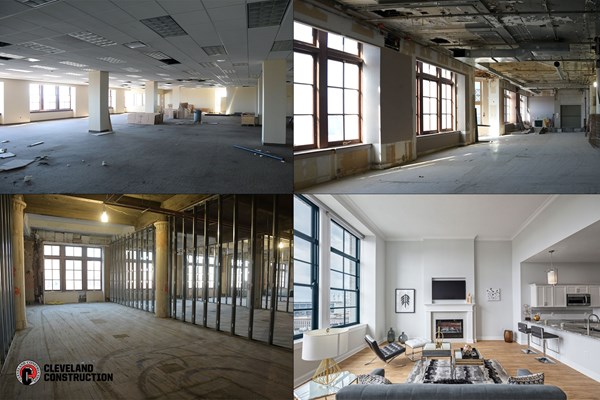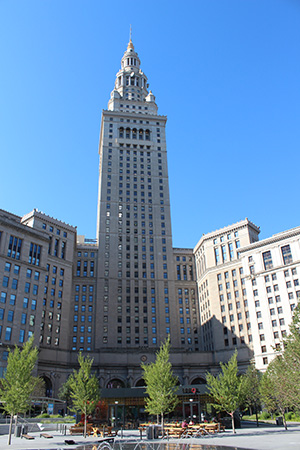
Landlords of office buildings are sleeping less soundly since the onslaught of the COVID-19 pandemic. Businesses, looking for ways to keep employees healthy and safe, are shedding office space as they allow some (if not all) their staff to work from home. The discovery that employees can be as (if not more) productive at home, not to mention the cut in office expenses and supplies needed, combine to make telecommuting an attractive long-term option for both businesses and employees.
What does the future hold for the office buildings where so many of us used to work?
While opinion varies on whether post-COVID office occupancy levels will ever recover to pre-pandemic levels, the general view is that there will be a reduction in occupier demand.
Older downtown office buildings, possessing fewer modern amenities, are most problematic, with commercial property owners seeing vacancy rates rise as it becomes more difficult to lease to an ever-smaller pool of potential businesses looking for more office space. Although the future sustainability of these buildings may be uncertain, it is hardly time to prepare for a date with the wrecking ball.
A viable alternative could be the adaptive reuse of these buildings.
1. Leveraging Historic and New Markets Tax Credits Can Make the Project Financially Sound
Adaptive reuse of an old building considered as “historic” may qualify for Federal tax credits. These credits can cover as much as 20 percent of rehabilitation expenses for buildings older than 50 years. A 10 percent credit is also available to non-historic commercial buildings. Likewise, state tax credits are also available to assist in making the project financially feasible. The U.S. Department of the Treasury Community Development Financial Institutions Fund offers a New Market Tax Credit Program (NMTC Program) that aims attracts private capital into low-income communities and reinvigorate struggling local economies. In exchange for making these equity investments in distressed communities, the program permits corporate investors to receive a tax credit against their federal income tax.

Downtown Cleveland’s iconic Terminal Tower office building was renovated last year to include 297 one-and two-bedroom apartments. The project happened after our client, K&D Group, received the promise of state historic tax credits of 5 million dollars. Our team provided construction management services for the conversion of twelve floors within that 52-story structure.
2. Conserving Resources and Energy Helps the Environment
It is no secret that construction has an urgent need to clean up its act where greenhouse emissions are concerned. It is estimated that our industry is responsible for 39% of all carbon emissions in the world. Cement accounts for approximately 7% of all man-made CO2 emissions annually. The resources and energy used to create a building are squandered when it is demolished. Adaptive reuse provides a way to save much of these resources and energy while using fewer construction materials. This lessens the impact on the environment and reduces the associated greenhouse emissions.
3. You Have Lower Hard Costs
Reusing an older structure means lower hard costs right out of the gate! The foundation and structure are already there. In many cases, an existing parking garage structure is also present. There is little or no demolition required. Additional land (if needed) is less expensive to acquire. Utilities and services are already connected and may only need modernization. Starting with a structure already in place means that a lot of the materials and corresponding erection costs have already been accounted for in the structure. Industry experts say adaptive reuse projects usually cost 15% to 20% less than their ground-up construction counterparts.
4. It Preserves a Piece of History
It is no stretch of the imagination to understand the debilitating effect abandoned buildings have on property values. In urban areas, property abandonment represents economic decline and hopelessness and invites crime. Preserving and repurposing these buildings helps to maintain the character of our cities, maintains a sentimental link, and bolsters our civic pride.

That is certainly the case with the adaptive reuse of the former BB&T Building located in the heart of downtown Asheville, North Carolina. Renamed the Kimpton Arras Hotel & Residences, the tallest building in Asheville was recently converted into a high-end mixed-use development with 128 hotel rooms, two restaurants, and 54 condominiums.
Adaptive reuse of this treasured landmark not only preserved a cherished part of the city’s history but added a boost to the economic revival of downtown, benefitting the entire city as a whole.
5. There is Stable Growth and Demand for Multi-family Properties
The adaptive reuse of office or hospitality purposed buildings offers tantalizing opportunities for new multi-family use for the enterprising developer. According to CBRE, multi-family residential is the second most stable market only after industrial. Commercial property owners should look to retool empty or under-occupied properties to capture the demand for residential. The first step consists of envisioning the possibilities.
What’s old CAN be new again!